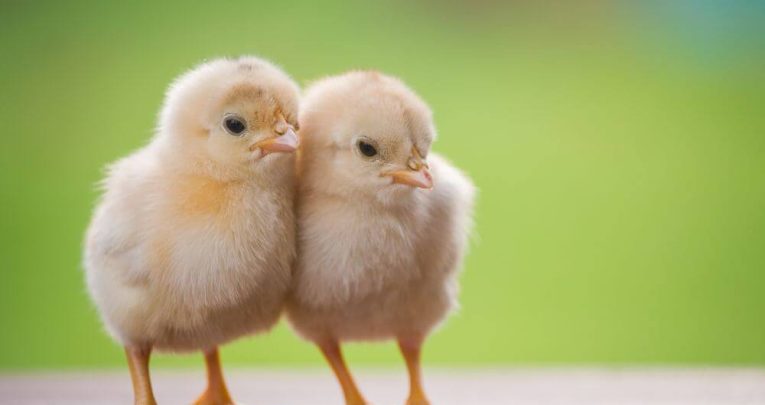Recovery curriculum – Hatching a plan for primary schools

When it comes to hatching a recovery plan for Key Stage 1 and 2, one child might make rapid progress but the next young person will be harder to crack, says Colin Dowland…

A metaphor was delivered to our primary school recently.
It was on one of those rare sunny spring mornings, so there was a touch of pathetic fallacy about it too, along with quite a bit of personification and a touch of allegory. And it was all wrapped up with layers of Covid recovery curriculum and decorated with a ribbon of corny, religious overtones.
Rather than coming from school leaders or another member of school staff, our metaphor was delivered by a seriously-bearded young man, who for the sake of further literary symbolism, we shall call Godfrey.
Having descended from ‘the north’ in a pristine white van, Godfrey unloaded his precious delivery and carried it into school in what were in fact two large boxes of metaphors and a slightly incongruous Tesco carrier bag full of slightly forced analogies.
On a special table in the entrance hall, Godfrey set up a small box with glass-panelled sides (which in the metaphor represents laptop screens – stay with me) and then set up a larger box (symbolising the school) which had a see-through panel in the side (representing a ‘Covid catch-up assessment window’).
And then, as if enacting an ancient religious ceremony, Godfrey opened a padded container and took out the main protagonists of this story and put them gently, one by one, into the glass-panelled box.
School life in the Covid 19 pandemic
When Godfrey had driven off, we stood for a long while, peering into the glass box, with its integral fan heater set at 37.7 degrees and realised we had been put in charge of looking after something rather special.
No, not Gavin’s pet tarantula or the original plans of Boris’s new briefing room. Inside the lidded, glass-panelled box were ten, light brown, perfectly formed hen’s eggs.
After the initial cluck of excitement from the children at the arrival of the long-awaited clutch of eggs, an air of sulphurous disappointment hung around the entrance hall for the next 48 hours. The ten new arrivals on roll simply lay there in their box, all ellipsoidal and motionless, just being eggy.
To be honest, they were pretty boring. The children, desperate for something interesting to do after being off school so long, soon lost interest.
Positive relationships – our new school community
However, on the metaphorical third day, when we arrived at school in the morning, seven of those boring eggs had been cracked apart and lay there at odd angles scattered around their glass box. It looked like a scene from the Humpty Dumpty Massacre.
But in between these jagged-edged half shells, shuffling unsteadily on pairs of tiny orange feet were seven photogenically perfect, fluffy, iridescent yellow chicks, chirping loudly with the joy of new life.
And during the next night, two of the three remaining slow developers (stick with the metaphor here) eventually hatched out and by the fourth day, nine pristine, persistently pecking chicks were transferred to the larger brooder box, complete with a bright lamplight and viewing window for the children to look inside and watch them develop, socialise and grow.
Pupil wellbeing and mental health
Over the next week, with my office right beside the entrance hall, a chorus of ‘oohs’ and ‘ahhs’ drifted through my door about every fifteen minutes as each class visited the brooder box.
The excited children gave the creatures their daily diet of chick crumbs (in the metaphor let’s call this literacy), topped up their water bowl (let’s call this maths) and changed their bedding every day (the recovery curriculum underpinning everything), while the lamplight kept them warm and safe (that’s the nurturing staff, I’m sure you realised) to ensure that they grew, flourished and had a bright future.
I know the metaphor is getting rather over-egged, but let’s crack on.
Each child’s ability is different
The children have now hatched out from behind their glass panelled laptop screens and been brought back into the warm brooder box that we call school. And having escaped the battery farm boredom of home learning into the sunny, free-range open spaces of the school yard, we have some serious educational husbandry to do.
Like in our special delivery from Godfrey, most of our hatchlings will make rapid progress, develop well and will soon be fully flying. Some will be later to emerge from their shells and need some extra support and nourishment as they start to fledge. Others, like our unhatched number ten (I didn’t forget), will be harder to crack.
But we will keep them in the incubator.
And as long as those eggheads from Ofsted are kept well away from the coop, we won’t need to ruffle any feathers. But I’m not counting my chickens.
Colin Dowland is a primary headteacher in North London. Follow him on Twitter at @colindowland. Visit his website at colindowland.co.uk.











